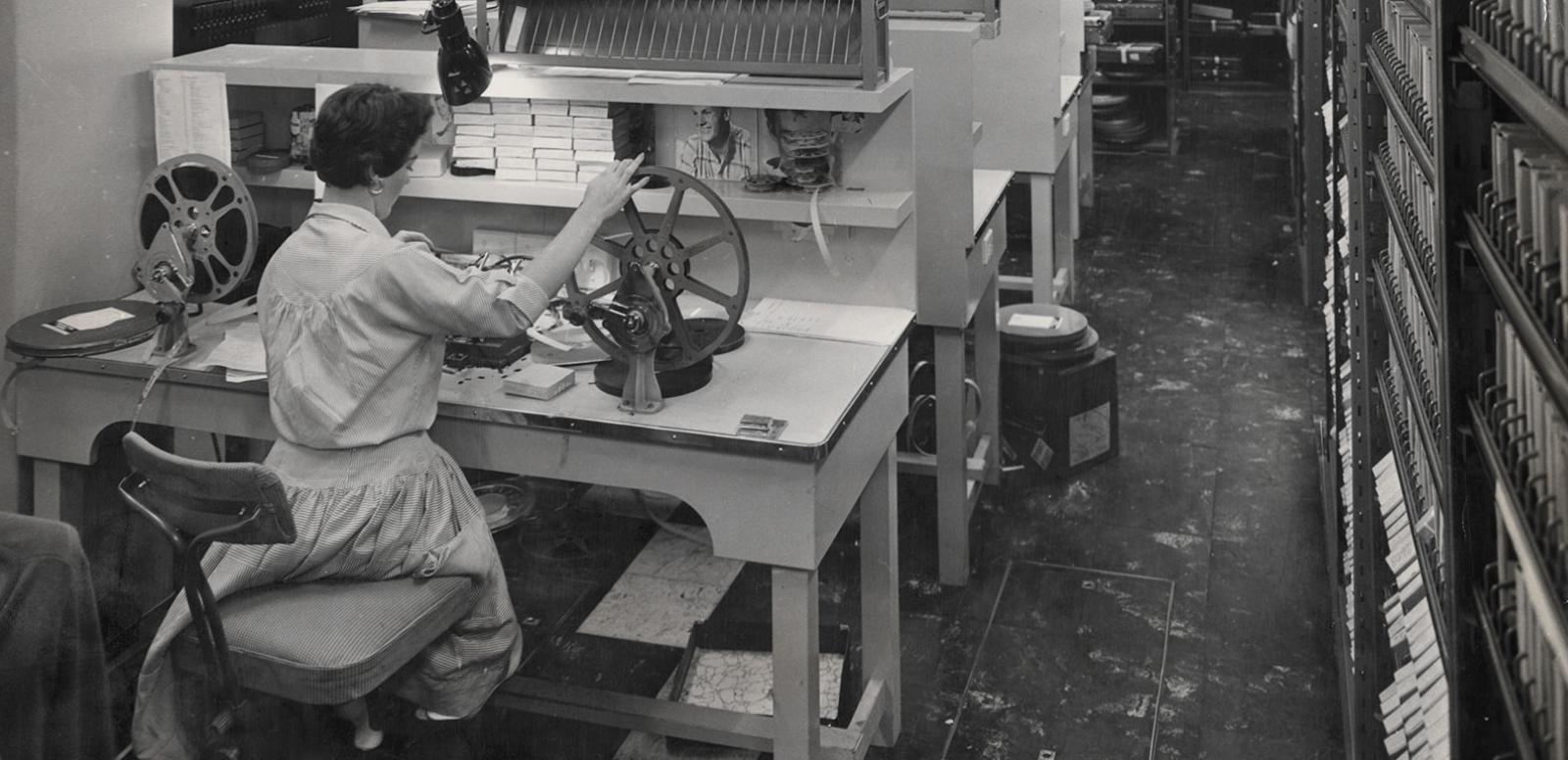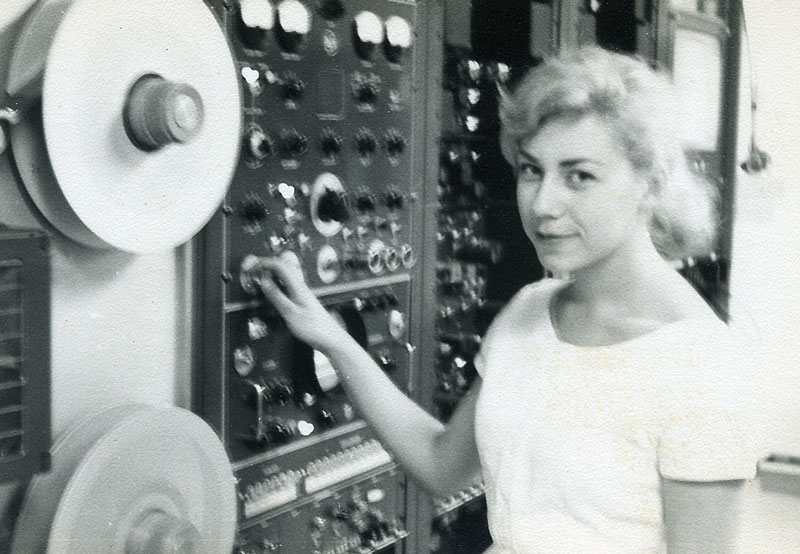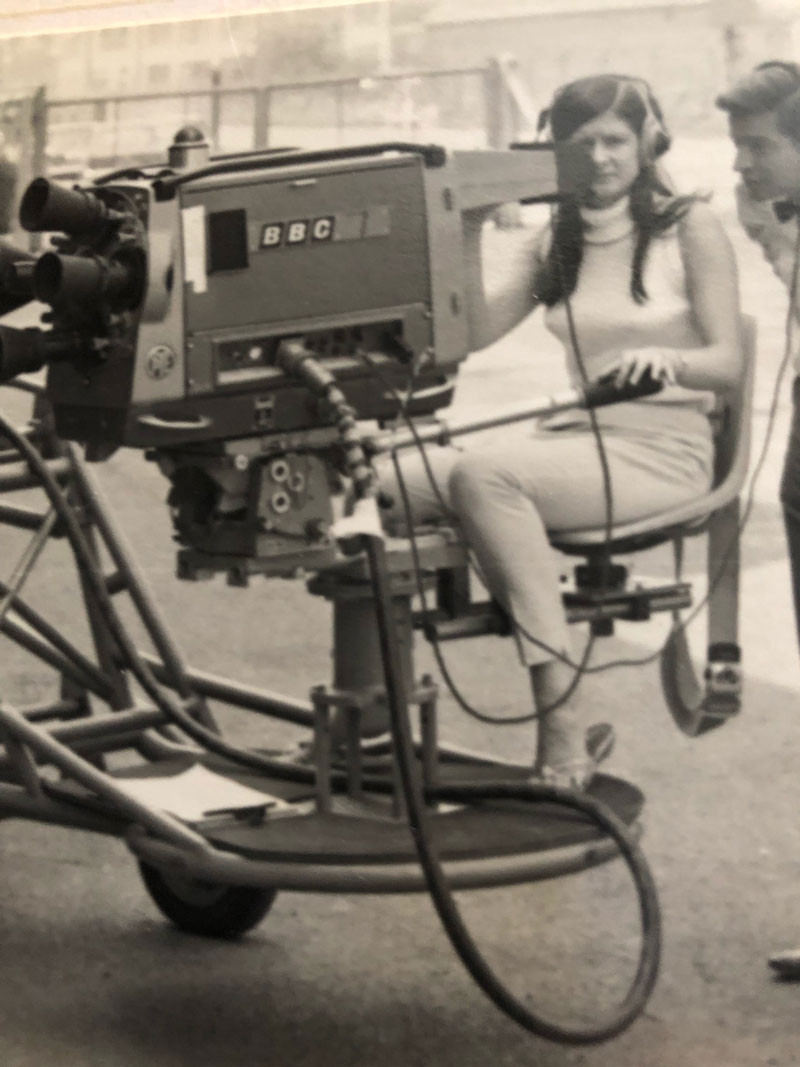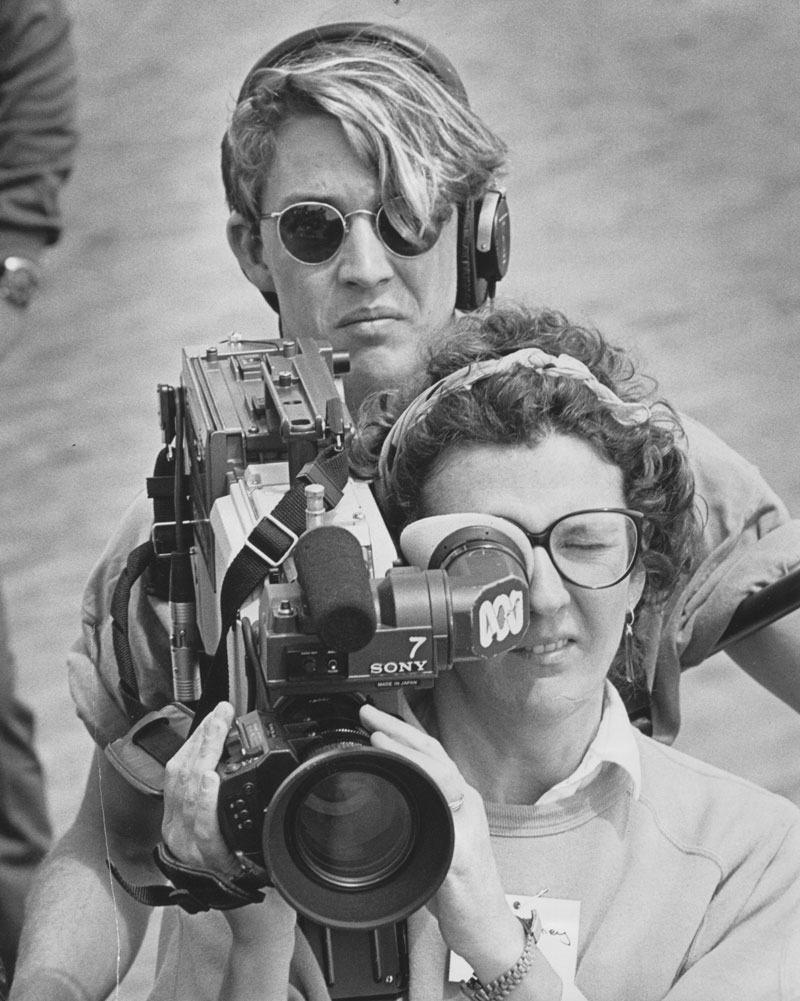This is the second article in a 5-part series on women’s contribution to early Australian television production. For creating the series, Jeannine Baker received the 2022 Oral History Australia Media Award.


This is the second article in a 5-part series on women’s contribution to early Australian television production. For creating the series, Jeannine Baker received the 2022 Oral History Australia Media Award.
In the early years of Australian television, numerous women excelled in technical areas of production, including editing, camera, videotape and telecine.
This silent 1969 film of the inner workings of Adelaide’s first television station NWS9 shows women performing a range of secretarial and technical jobs, including film editing:
Filmed tour of NWS9 Adelaide, 1969. Please note: this clip is silent. Donated by John Hatcher. Courtesy Nine Network Australia. NFSA title: 297481.
One of the ABC’s first film editors was Margaret (Maggie) Cardin, an experienced British editor and negative cutter who edited the Australian feature Captain Thunderbolt before coming to the ABC in September 1956. In this interview excerpt, Maggie talks about instructing ABC staff in the basics of working with film:
Audio: Margaret Cardin interviewed by Graham Shirley, 1980. NFSA title: 216864.
Image: Film editor and neg cutter, Margaret Cardin. NFSA title: 378695.
After 3 years at the ABC, Cardin continued working in film post-production and became a renowned negative cutter at Colorfilm. Although it was rare for women to be editors in early television, assistant editing was one technical job commonly filled by women because the repetitive, mechanical and organisational aspects of the work, and the need for a ‘light touch’, were considered a match for women’s abilities.
It was also possible for women to follow a technical path into production from the entry level jobs of telecine and videotape.
Pat ‘Billie’ Teare joined NBN3 Newcastle in 1962 as a film handler, but soon took on the role of videotape operator due to her aptitude with machinery.

Pat ‘Billie’ Teare, NBN3 videotape operator, 1969. NFSA title: 1491301. Courtesy Nine Network.
The TV Times declared that the 'glamorous blonde' had a 'feminine intuition of her own that helps her "sense" the quickest way of getting ailing pieces of complex machinery going again', an account that emphasised Billie’s femininity and downplayed her technical expertise.
Judy Johnston was hired by ATN7 Sydney in 1961 after completing a TAFE course in TV production.

Of course in those days a 90-minute video tape was better than going to the gym, because it was a very, very big reel, and the machines were very big. So you put them on, and you started them and stopped them. You recorded from studios, but you also put material to air, again, via the coordinating studio. We also did editing, so I learnt to edit.
Judy began in telecine, then moved into the highly technical and physically demanding job of videotape operator, and then into vision switching. Judy describes here the work of a vision switcher, who needed to stay calm in the high-pressure environment of live television:
Audio: Judy Johnston interviewed by Jeannine Baker, 2018. NFSA title: 1652437.
Image: Judy Johnston, 1970. Supplied by Judy Johnston.
In 1965 Judy began working in London at the BBC, which did not recruit women into technical roles. Although employed as a clerk typist, Judy’s technical operating experience soon saw her working as a producer’s assistant in outside broadcasts and news, allowing her to circumvent the normal secretarial route into production.
Several women worked as camera operators in early television, initially as freelance camera ‘stringers’ to cover events that regular news crews could not easily reach.
Claire Lupton was working in the ABC’s Sydney news department in 1958 when the male camera operators secretly trained her on the film equipment, and then demanded she be given the opportunity to become a ‘cameraman’ by passing a test. In this excerpt from her oral history interview, Claire recalls being set an especially difficult task:
Audio: Claire Lupton interviewed by Jeannine Baker, 2018. NFSA title: 1526020.
Image: Claire Harrison’s ABC camera correspondent certificate. NFSA title: 1526020.
Soon after passing the camera test Claire moved to Port Moresby, where she worked in the record library at 9PA radio and as the ABC’s camera correspondent for Papua New Guinea, using her own 16mm film camera. After moving to regional New South Wales in 1965, Claire continued to shoot film for the ABC and WIN, while also working in newspapers and radio, and raising her family. Her work appeared in a range of television programs, from scenes around Albury for the ABC series Bellbird, to natural disasters or accidents for the daily news. In this next excerpt, Claire recalls covering a light plane crash near Merimbula, at a time when there was little recognition of the impact of trauma on media workers:
Audio: Claire Lupton interviewed by Jeannine Baker, 2018. NFSA title: 1526020.
Image: Claire Lupton filming at a NSW beach for the ABC, circa 1975. Supplied by Claire Lupton.
Claire Lupton continued to work as a stringer for the ABC and commercial TV until the introduction of colour video cameras in about 1979. Other women camera stringers, who all started in the 1960s, were Pat Davey (Newcastle), Dorothy Hallam (Tasmania) and Pat Walter (Adelaide).
A 1975 report on women at the ABC showed that supervisors in the camera department believed that camera work was too rough, dirty or dangerous for women, and that women were unable to manage the heavy equipment – apparently ignorant of the work of women stringers. Women who applied to the camera department were refused interviews, and jobs were normally listed in the ‘Men and Boys’ section of the classified advertisements.
Women were finally employed as full-time television camera assistants from the late 1970s. Jen Ward was hired as a news camera assistant at ATN7 in Sydney in 1979 after graduating at the top of her television production course at North Sydney TAFE:

I loved the shooting with film and being able to see through the viewfinder and just paint with light.
As Jen recalls here, the introduction of video cameras and other electronic equipment transformed news gathering, but also spelled the end of working with film:
Audio: Jen Ward interviewed by Jeannine Baker, 2018. NFSA title: 1652423.
Image: Jen Ward and operations manager Graham Storer at the door of ATN-7’s helicopter, looking at a RCA TK-76 colour camera, 1979. NFSA title: 809079. Courtesy Seven Network. All rights reserved ©.
When Jenni Meaney entered the ABC in Sydney in March 1980 as a camera assistant, she was the only woman working in camera or sound. As Jenni recalls in this interview, the lack of a women’s toilet in News provided an unexpected benefit by propelling her into more prestigious work on documentaries:
Audio: Jenni Meaney interview by Ina Bertrand, 1993. NFSA title: 767421.
Image: Jenni Meaney and sound recordist Dave Pearson shooting news for the ABC in the 1980s. Supplied by Jenni Meaney.
Like other women camera operators, Jenni enjoyed the artistic, physical and technical aspects of the work:

I pretty quickly realised that the visual storytelling was what attracted me, and also cameras attracted me. I liked cameras and I liked the way the cameras felt at the centre of the film. I liked being busy and at the camera, and I realised quite quickly that camera attracted me for a whole lot of reasons. Because I quite like technical things, and I'm quite practical.
Despite these success stories, the number of women camera operators remained stubbornly low through the 1980s and beyond. The persistent underrepresentation of women in technical areas of production is due more to discriminatory structures and work practices than to women’s lack of interest or expertise in television technology.
This is the second part of a 5-part series, The Women Who Made Australian Television, written and curated by Dr Jeannine Baker, media historian and Honorary Fellow in the Faculty of Arts, Social Sciences and Humanities, University of Wollongong.
This series was made possible with the generous support of the Media Studies Commission of FIAT/IFTA, the National Film and Sound Archive of Australia, Seven Network, Nine Network, Network 10, and the Australian Broadcasting Corporation – Library Sales.
Read The Women Who Made Australian Television Part 1 – The Beginnings of Television, Part 3 - Calling the Shots, Part 4 – Women's and Children's Programs and Part 5 – Rosemary Eather.
Main image: A woman at a film winding bench at Channel 7, Sydney, circa 1956. NFSA title: 1010010. Courtesy Seven Network.
First image with quote: Judy Johnston at a training course at the BBC, circa 1965. Supplied by Judy Johnston.
Second image with quote: Jenni Meaney and sound recordist Dave Pearson shooting news for the ABC in the 1980s. Supplied by Jenni Meaney.
The National Film and Sound Archive of Australia acknowledges Australia’s Aboriginal and Torres Strait Islander peoples as the Traditional Custodians of the land on which we work and live and gives respect to their Elders both past and present.